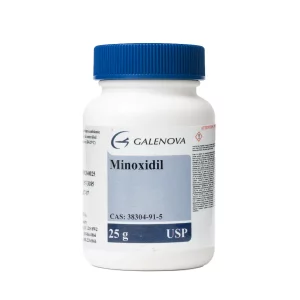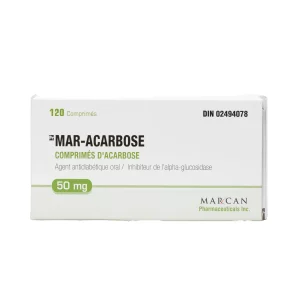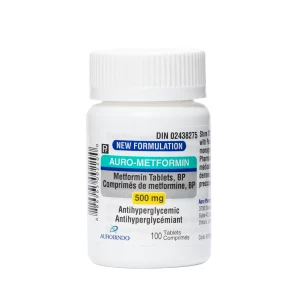Your cart is empty.
Your cart is empty.
Avodart was originally developed for prostate health, specifically to treat enlarged prostate. But today, Avodart for male pattern baldness is gaining attention as an off-label treatment. If you’ve been exploring hair restoration options, you may have come across Avodart improves skin in passing. This is mostly because the changes in DHT levels can subtly affect appearance beyond hair health. In this article, we dive into Avodart for Longevity, explore how it works to support hair regrowth, compare it to other hair loss treatments, and help you decide if it fits your long-term wellness goals.
Avodart is the brand name for dutasteride, a medication that belongs to a class called 5-alpha reductase inhibitors. Originally developed and FDA-approved for treating benign prostatic hyperplasia (BPH), Avodart has proven to be remarkably effective at reducing prostate size and improving urinary symptoms in men with enlarged prostates. The medication works by blocking specific enzymes that convert testosterone into dihydrotestosterone (DHT), a powerful hormone that plays a central role in both prostate enlargement and hair follicle miniaturization. This dual-action capability makes Avodart unique among hormone-regulating medications, as it addresses multiple age-related concerns that many men face as they prioritize their long-term health and appearance.
What sets Avodart apart from other treatments is its comprehensive approach to hormone management and its growing reputation in the longevity community. Beyond its approved use for prostate health, Avodart has gained significant recognition for its off-label use in hair loss treatment, with many healthcare providers and patients discovering that the same powerful hormone-blocking effects that help with prostate issues also provide substantial benefits for scalp hair maintenance. This dual benefit appeals particularly to health-conscious individuals who view hormone optimization as part of their broader wellness strategy.

The most common type of hair loss in both men and women is androgenetic alopecia, also called pattern baldness. This condition stems from a hormone called dihydrotestosterone (DHT). High levels of DHT bind with hair follicles, shrinking them over time. Tiny follicles produce thinner, weaker hairs, then eventually stop producing hair at all.
Avodart works by inhibiting the enzymes 5-alpha reductase type I and type II, which convert testosterone into DHT. This dual blocking effect is more powerful than that of finasteride, which only targets type II. With dutasteride oral treatment, blood DHT levels drop by over 90%, offering a more effective way to protect hair follicles from hormone-related damage.
| Treatment | How It Works | Advantages | Considerations |
| Avodart | Lowers DHT by blocking 2 enzyme types | Strong DHT suppression, robust results | Off-label requires pa rescription |
| Finasteride | Blocks type II enzyme, reduces DHT 60–70% | FDA-approved for hair loss | Less potent than Avodart |
| Minoxidil | Topical vasodilator stimulating scalp blood flow | Over-the-counter, easy to use | Works differently, usually used with DHT blockers |
| Supplements, PRP, lifestyle | Varying mechanisms (nutrition, growth factors) | Holistic, low-risk | Less powerful alone |
Avodart’s strong DHT suppression often makes it a go-to for people not seeing results with finasteride. Meanwhile, topical minoxidil is widely used alongside to boost scalp blood flow. Supplements, stress reduction, and diet may support growth but are not as effective on their own.

In off-label hair loss use, the typical dosage is 0.5 mg daily. Some people use it every other day or a few times weekly to maintain DHT suppression with lower exposure. However, dosing should always be guided by a healthcare provider based on individual needs, treatment goals, and monitoring.
The timeline for visible results:
Most users report reduced hair shedding and better overall hair density. Consistency is key, lack of results often stems from irregular use or insufficient dose.
Yes, Avodart can be a long-term solution for managing hair loss, especially male pattern baldness. That’s because androgenetic alopecia is a progressive condition, it doesn’t stop on its own. Once your hair follicles begin to shrink due to DHT, the process continues unless something intervenes. Dutasteride, the active ingredient in Avodart, blocks the hormones responsible for this shrinkage, which makes it ideal for ongoing use.
The key to lasting results lies in consistency. Many people see positive changes within 3 to 6 months of starting treatment, but stopping it can reverse those gains. Over time, if dutasteride oral therapy is discontinued, DHT production resumes, and affected hair follicles can begin to shrink again, leading to renewed thinning or shedding. Unlike short-term solutions that stimulate surface-level growth or mask thinning, Avodart addresses the root cause, hormonal imbalance.
Avodart may be ideal if you are:
If you’re interested in dutasteride oral therapy or considering alternatives, consult your provider to evaluate benefits, any barriers, and monitor progress.
Seeing progress visually and chronologically helps reinforce consistency and informs decisions on dosage or treatment adjustments.
Prepare these questions:
Also discuss other medications, supplements, and your long-term wellness goals so your chosen professional can tailor the plan to your health.
The typical off-label dosage is 0.5 mg daily, though some providers may recommend lower or less frequent dosing based on individual factors.
Avodart blocks more forms of the enzyme that produces DHT, so it may be more effective for people who didn’t respond to finasteride. It’s a stronger DHT blocker.
Most people notice reduced shedding or new growth within 3 to 6 months of daily use.
Although not officially approved for hair loss, many providers prescribe it off-label. Under medical supervision, it’s considered a safe and effective loss treatment for those who understand how DHT blockers work.
It’s not commonly prescribed to women. Use in women should only occur with close medical supervision due to hormone effects.
Avodart is quickly becoming a top off-label choice for individuals seeking powerful, long-term support for hair loss. Its ability to dramatically reduce DHT levels sets it apart from older solutions like finasteride. For those serious about maintaining scalp health, enhancing their appearance, and aligning hair care with broader longevity goals, Avodart may be the answer. Beyond hair preservation, some view Avodart as a longevity aid due to its role in modulating hormones linked to aging.
But it’s not for everyone. Talk to a qualified provider, weigh your options, and consider how committed you are to long-term use. When used correctly, Avodart doesn’t just slow hair loss, it can help you regain control of your look and confidence.
References (APA)





Unlock savings on bundles and elevate your online experience today!